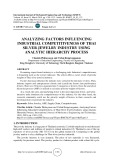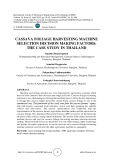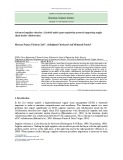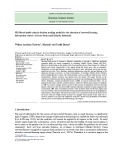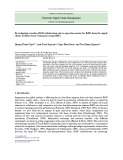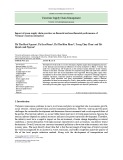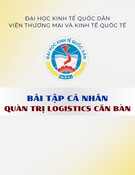
* Corresponding author
E-mail address: thanhnq@uel.edu.vn (Q.-T. Ngo)
© 2020 by the authors; licensee Growing Science.
doi: 10.5267/j.uscm.2020.4.001
Uncertain Supply Chain Management 8 (2020) 513–522
Contents lists available at GrowingScience
Uncertain Supply Chain Management
home
p
a
g
e: www.Growin
g
Science.com/usc
m
Do technology transfer, R&D collaboration and co-operation matter for R&D along the supply
chain? Evidence from Vietnamese young SMEs
Quang-Thanh Ngoa,b*, Anh-Tuan Nguyena,b, Ngoc-Phuc Doanc and Tien-Dung Nguyena,b
aUniversity of Economics and Law (UEL), Ho Chi Minh City, Vietnam
bVietnam National University Ho Chi Minh City (VNU-HCM), Ho Chi Minh City, Vietnam
cUniversity of Finance-Marketing, Ho Chi Minh City, Vietnam
C H R O N I C L E A B S T R A C T
Article history:
Received January 29, 2020
Received in revised format March
2, 2020
Accepted March 11 2020
Available online
March 14 2020
Technology transfer, collaboration, and co-operation in the R&D innovation increase their
importance when firms integrate into the world economy, especially along the global supply
chain. By using a specially designed sample of 3,253 Vietnamese young small and medium-
sized enterprises in 2010-2013, the article examines the impact of technology transfer and
R&D collaboration and co-operation on a firm’s R&D innovation input, and innovation output,
along the supply chain. The estimation results indicate that technology transfer collaboration
and co-operation are complementary during the innovation process, initiating the application
of innovation both in terms of input and output. In addition, R&D collaboration and co-
operation are complementary in enhancing the innovation output.
.2020 b
y
the authors; license Growin
g
Science, Canada©
Keywords:
Technology Transfer
Collaboration
Co-operation
R&D Innovation Behavior
Supply chain
1. Introduction
Integration into global markets is affecting the way that firms organize their activities related to R&D
innovation, supply chain – those are heavily based on increasing collaboration and/or co-operation
(Soosay et al., 2008; Arshinder et al., 2011; Becker & Dietz, 2004). A number of studies have paid
attention to collaborative, and cooperative activities that help enterprises enhance R&D activities and
overcome challenges posed by globalization (Polenske, 2004; Markusen, 1996; Paul, 1991). In the past
decade, we have observed an emerge of open innovation model, where firms complement and
supplement their own technological resources with those of other firms (Chesbrough, 2003). The
increase of new and innovative products requires a working network involving several firms and
institutions (Nooteboom, 1999). Information exchange and resource transfers with different
counterparts are decisive acting components in the innovation (Becker & Dietz, 2004). The crucial role
of technology transfer (TT) and R&D collaboration and co-operation has accelerated as a consequence
of network complexity, both inside and outside challenges and large budget requirements of innovation
(Coombs, 1988; Dodgson, 1993); Hagedoorn & Schakenraad, 1992). Arora and Gambardella (1994)
discover, for large US chemical and pharmaceutical firms, R&D collaborations are increasing.

















